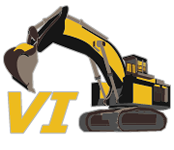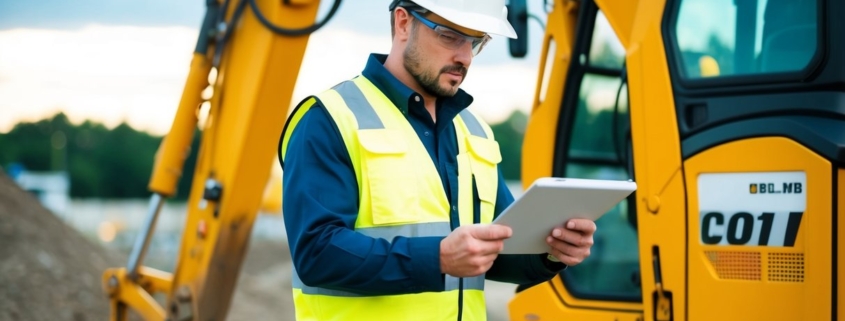Excavator safety is crucial for protecting workers on construction sites. Excavation work can be dangerous if proper precautions aren’t taken. By following safety protocols and best practices, you can create a safer work environment and reduce the risk of accidents.

Proper training and awareness of potential hazards are essential for excavator operators and nearby workers. You need to understand the risks associated with excavation work, including cave-ins, equipment rollovers, and underground utility strikes. By recognizing these dangers, you can take steps to prevent them and keep everyone safe on the job site.
OSHA’s excavation standards provide guidelines for safe excavation practices. These include proper soil classification, trench protection systems, and regular inspections. By following these rules and implementing best practices, you can minimize risks and ensure a safer work environment for all involved in excavation projects.
Key Takeaways
- Proper training and hazard awareness are crucial for excavator safety
- Regular equipment inspections and maintenance help prevent accidents
- Following safety protocols and best practices creates a safer work environment
Understanding Excavation Hazards and Preventative Measures
Excavation work comes with serious risks. Knowing these dangers and taking steps to prevent them is key to keeping workers safe. Let’s look at the main hazards and how to avoid them.
Identifying Key Excavation Hazards
Cave-ins are a top danger in excavation. They can happen fast and trap workers. Other big risks are falls, falling objects, and hazardous atmospheres.
Underground utilities pose hidden threats. Hitting gas or power lines can be deadly. Water build-up is also risky. It can weaken soil and cause collapses.
Weather plays a big role too. Rain, frost, and heat can all make soil unstable. Confined spaces in trenches can lead to air quality issues.
Utilizing Protective Systems and Equipment
Proper gear is a must for excavation safety. Hard hats, steel-toed boots, and high-vis vests are basic needs. Safety glasses protect eyes from debris.
Trench boxes and shoring systems prevent cave-ins. Sloping is another way to make trenches safer. Choose the right system based on soil type and depth.
For air quality concerns, use ventilation gear. Gas detectors can spot dangerous fumes. Always have emergency breathing devices on hand.
Ensuring Safe Excavation Practices and Procedures
Good planning is crucial. Always check for underground utilities before digging. Have a competent person inspect the site daily.
Set up clear communication rules. Use hand signals or radios to talk on noisy sites. Make sure everyone knows the emergency plan.
Keep heavy gear and soil piles away from trench edges. Use proper access points like ladders or ramps. Never work alone in a trench.
Watch the weather. Stop work if conditions get risky. Train all workers on safety rules and how to spot dangers.
Operational Safety and Equipment Maintenance
Proper maintenance and safe operation are key to preventing accidents with excavators. Regular checks, trained operators, and clear emergency plans help keep job sites safe.
Maintenance Best Practices and Regular Inspections
Regular safety audits are vital for excavator safety. Check hydraulic systems daily for leaks or damage. Look for wear on tracks, buckets, and teeth. Test all safety devices before each use.
Keep a log of maintenance tasks and issues. Clean the machine often to spot problems early. Check fluid levels and top up as needed.
Have a certified mechanic do thorough inspections on a set schedule. They can catch issues you might miss. Replace worn parts right away to avoid breakdowns.
Don’t forget about electrical systems. Check wiring for frays or exposed areas. Make sure all lights and signals work properly.
Excavator Operation and Personnel Training
Proper training is crucial for safe excavator use. Operators need to know the machine’s limits and features. Teach them to do pre-start checks every time.
Make sure workers wear the right personal protective equipment (PPE). Hard hats, steel-toe boots, and high-vis vests are a must. Use seat belts when in the cab.
Set clear rules for the work area. Keep other workers away from the excavator’s swing radius. Use spotters for tight spaces or low visibility.
Train operators on proper digging techniques. They should know how to avoid utility lines and unstable soil. Always call before you dig to locate buried hazards.
Developing a Comprehensive Emergency Plan
Every job site needs a solid emergency plan. Post it where everyone can see it. Include steps for common issues like fires or tip-overs.
Make sure all workers know how to shut off the excavator quickly. Have fire extinguishers and first aid kits nearby.
Practice emergency drills regularly. This helps workers stay calm in real crises. Include how to safely evacuate an injured operator from the cab.
Plan for hazardous material spills too. Know how to contain them and who to call. Keep spill kits on hand for quick response.
Review and update your plan often. As projects change, so should your safety measures. Always put worker safety first in any emergency.




